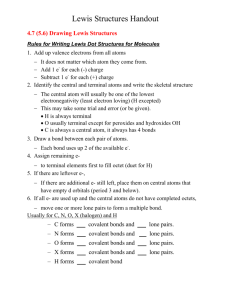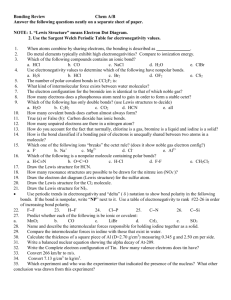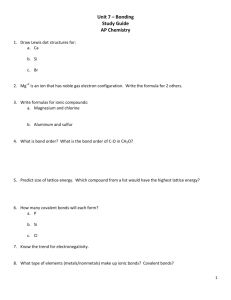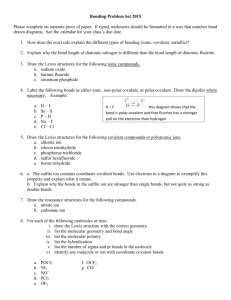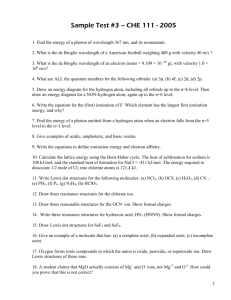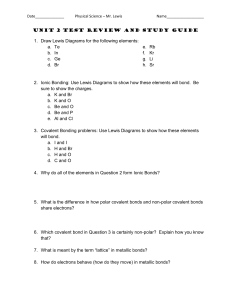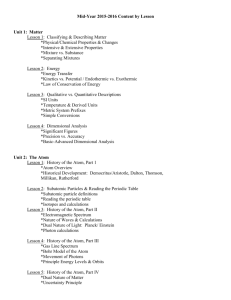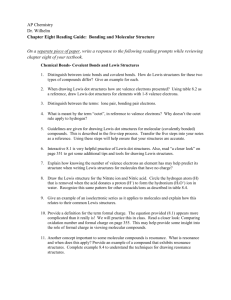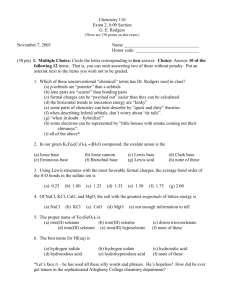Unit 2 Reading Guide
advertisement
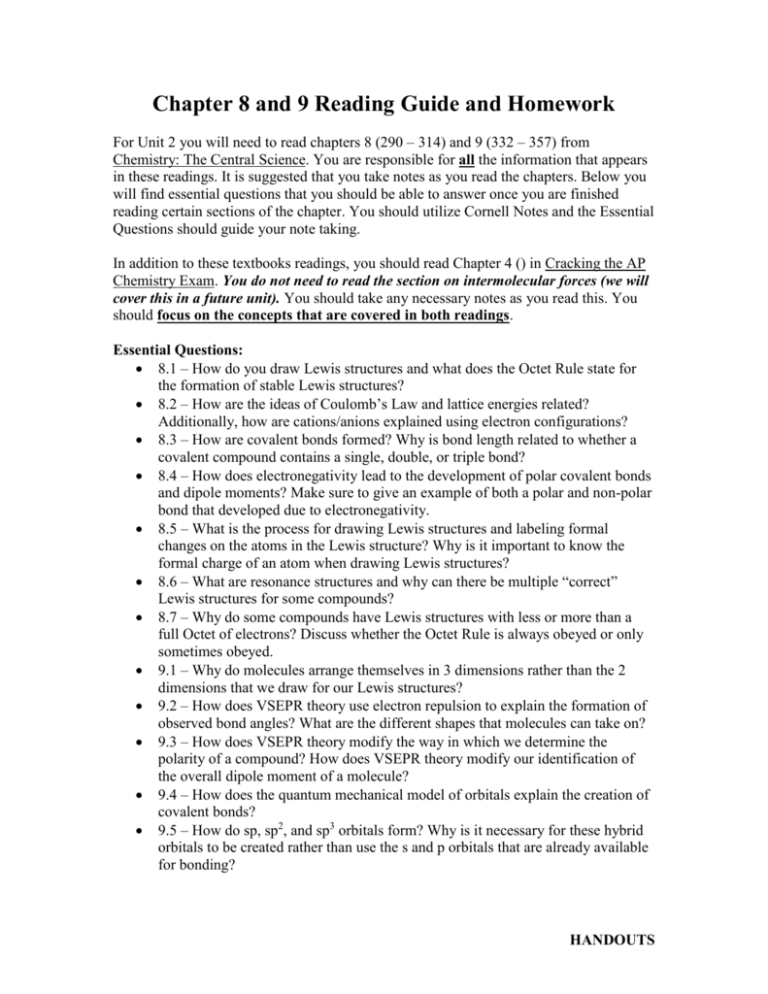
Chapter 8 and 9 Reading Guide and Homework For Unit 2 you will need to read chapters 8 (290 – 314) and 9 (332 – 357) from Chemistry: The Central Science. You are responsible for all the information that appears in these readings. It is suggested that you take notes as you read the chapters. Below you will find essential questions that you should be able to answer once you are finished reading certain sections of the chapter. You should utilize Cornell Notes and the Essential Questions should guide your note taking. In addition to these textbooks readings, you should read Chapter 4 () in Cracking the AP Chemistry Exam. You do not need to read the section on intermolecular forces (we will cover this in a future unit). You should take any necessary notes as you read this. You should focus on the concepts that are covered in both readings. Essential Questions: 8.1 – How do you draw Lewis structures and what does the Octet Rule state for the formation of stable Lewis structures? 8.2 – How are the ideas of Coulomb’s Law and lattice energies related? Additionally, how are cations/anions explained using electron configurations? 8.3 – How are covalent bonds formed? Why is bond length related to whether a covalent compound contains a single, double, or triple bond? 8.4 – How does electronegativity lead to the development of polar covalent bonds and dipole moments? Make sure to give an example of both a polar and non-polar bond that developed due to electronegativity. 8.5 – What is the process for drawing Lewis structures and labeling formal changes on the atoms in the Lewis structure? Why is it important to know the formal charge of an atom when drawing Lewis structures? 8.6 – What are resonance structures and why can there be multiple “correct” Lewis structures for some compounds? 8.7 – Why do some compounds have Lewis structures with less or more than a full Octet of electrons? Discuss whether the Octet Rule is always obeyed or only sometimes obeyed. 9.1 – Why do molecules arrange themselves in 3 dimensions rather than the 2 dimensions that we draw for our Lewis structures? 9.2 – How does VSEPR theory use electron repulsion to explain the formation of observed bond angles? What are the different shapes that molecules can take on? 9.3 – How does VSEPR theory modify the way in which we determine the polarity of a compound? How does VSEPR theory modify our identification of the overall dipole moment of a molecule? 9.4 – How does the quantum mechanical model of orbitals explain the creation of covalent bonds? 9.5 – How do sp, sp2, and sp3 orbitals form? Why is it necessary for these hybrid orbitals to be created rather than use the s and p orbitals that are already available for bonding? HANDOUTS 9.6 – What are sigma and pi bonds? Which of these bonds is along the internuclear axis and which of these are above and below the axis? How do pi bonds form? Be sure to give a labeled example of pi and sigma bonds. You do not need to read sections 8.8, 9.7 and 9.8. These sections are beyond the scope of the unit. Homework Problems (DUE September 17th/18th – Day of Unit 1 Exam) Chapter 8: 8.1, 8.4, 8.8, 8.22, 8.24, 8.25, 8.39, 8.41, 8.42, 8.47, 8.48, 8.52 (don’t worry about oxidation numbers), 8.63, and 8.64 Chapter 9: 9.2, 9.3, 9.6, 9.7, 9.8, 9.14, 9.23, 9.27, 9.29, 9.40, 9.43, 9.44, 9.47, 9.49, 9.56, 9.59, and 9.69 Cracking the AP Chemistry Exam Suggested Problems (not turned in, but great preview of questions that will be on the Unit 2 test). HINT – I use at least a few of these questions on every test! Chapter 4 MC– 1, 3, 6, 8 – 10, 13 – 19, 22 – 23 Chapter 4 Essays – 2 and 4 HANDOUTS
